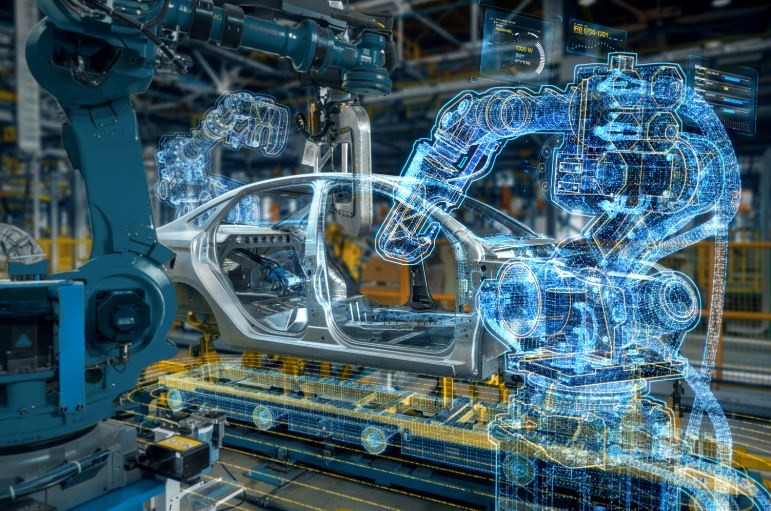
In recent years, the concept of virtual twins has gained immense popularity in the tech industry. Virtual twins are digital replicas of physical objects or systems created using sophisticated algorithms, sensors, and other advanced technologies. These digital twins enable organizations to monitor, analyze, and optimize the performance of physical objects or systems in real time. This blog post will explore the fascinating world of virtual twins, including their applications, benefits, and challenges.
Applications of Virtual Twins
Virtual twins have various applications across industries, including manufacturing, healthcare, transportation, and energy. In manufacturing,virtual twins, like virtual twin Dassault Systèmes, are used to monitor and optimize the performance of complex machines and production lines. Virtual twins can also simulate different scenarios and predict the impact of changes in production processes, enabling manufacturers to improve efficiency and reduce costs.
Virtual twins can be used in healthcare to create digital replicas of organs or body parts, enabling doctors to simulate surgical procedures and optimize treatment plans. Virtual twins can also monitor patients' health in real time, providing doctors with valuable insights into their condition and enabling them to make informed treatment decisions.
In transportation, virtual twins monitor vehicles' performance and optimize their operation. For example, virtual twins can be used to simulate the impact of different road conditions on a vehicle's performance, enabling manufacturers to improve safety and comfort for passengers. Virtual twins can also be used to optimize the performance of traffic management systems, reducing congestion and improving traffic flow.
In the energy sector, virtual twins monitor and optimize the performance of power plants, wind turbines, and solar panels. Virtual twins can predict system failures and optimize maintenance schedules, reducing downtime and improving efficiency. Virtual twins can also be used to simulate the impact of different weather conditions on the performance of renewable energy systems, enabling operators to optimize their output and reduce costs.
Benefits of Virtual Twins
Virtual twins offer a range of benefits across industries, including:
1. Reduced Maintenance Costs: Virtual twins enable organizations to monitor the performance of physical objects or systems in real time, identifying potential issues before they become major problems. It enables organizations to schedule maintenance and repairs proactively, reducing downtime and minimizing costs.
2. Enhanced Efficiency: Virtual twins enable organizations to optimize the performance of physical objects or systems by simulating different scenarios and identifying the most efficient processes. It can lead to significant cost savings and improved productivity.
3. Improved Decision-making: Virtual twins provide organizations with valuable insights into the performance of physical objects or systems, enabling them to make informed decisions about maintenance, repairs, and upgrades. It can lead to better decision-making and improved outcomes.
4. Predictive Maintenance: Virtual twins enable organizations to predict system failures before they occur, enabling them to schedule maintenance and repairs proactively. It can reduce downtime and improve the reliability of physical objects or systems.
5. Reduced Risk: Virtual twins enable organizations to simulate different scenarios and identify potential risks, enabling them to take steps to mitigate them. It can reduce the risk of accidents, injuries, and other incidents.
Challenges of Virtual Twins
While virtual twins offer a range of benefits, they also pose some challenges, including:
1. Data Security: Virtual twins generate large amounts of data, much of which is sensitive and confidential. Organizations must take steps to ensure the security of this data, protecting it from cyber threats and other risks.
2. Integration with Legacy Systems: Virtual twins must be integrated with existing systems and processes, which can be challenging. Organizations must ensure their virtual twin systems are compatible with legacy systems and can be easily integrated without disrupting existing operations.
3. Cost: Creating and maintaining virtual twins can be costly, requiring significant investment in advanced technologies and skilled personnel. Organizations must carefully consider the costs and benefits of virtual twins before implementing them.
4. Complexity: Virtual twins are complex systems that require specialized expertise to develop and maintain. Organizations must have access to skilled personnel who can effectively design, build, and maintain virtual twins.
5. Data Quality: Virtual twins rely on accurate and reliable data to generate insights and make informed decisions. Organizations must ensure that the data used to create and maintain virtual twins is high quality and free from errors or biases.
Conclusion
Virtual twins are transforming industries across the globe, offering a range of benefits, from reducing maintenance costs and enhancing efficiency to improving decision-making and predicting system failures. While virtual twins pose some challenges, including data security, integration with legacy systems, and cost, their benefits make them a game-changer in the digital age. With careful planning and investment, virtual twins can revolutionize industries, enabling organizations to optimize the performance of physical objects or systems and make informed decisions that lead to improved outcomes.
ⓒ 2025 TECHTIMES.com All rights reserved. Do not reproduce without permission.




